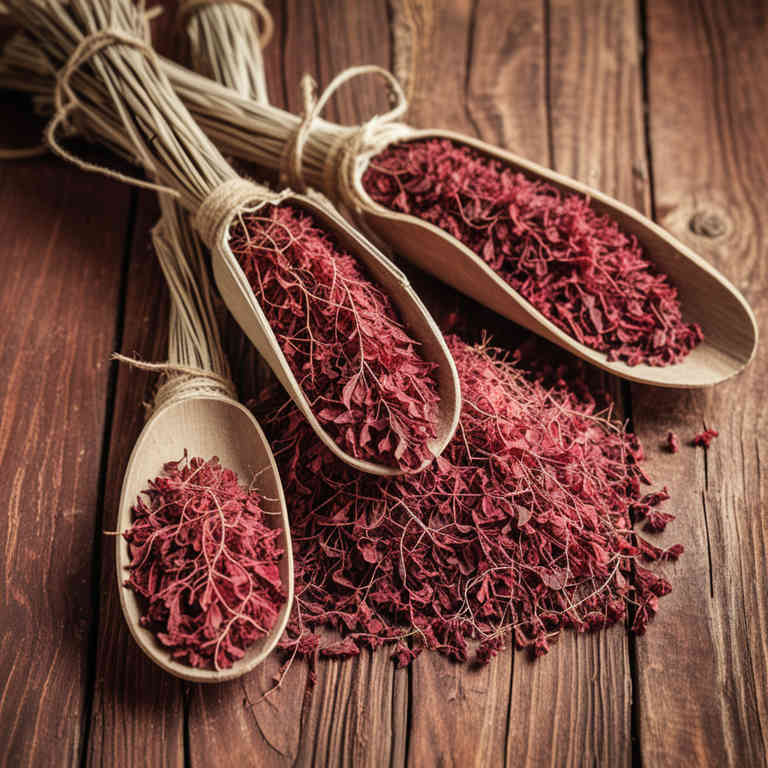Ulmus rubra linctuse for medicinal use

Ulmus rubra linctuse is a traditional herbal preparation derived from the inner bark of the red elm tree (Ulmus rubra).
It is commonly used in herbalism to soothe respiratory conditions such as coughs and sore throats due to its expectorant and anti-inflammatory properties. The preparation is typically made by simmering the bark in water to extract its active compounds. It is often recommended for its mild and gentle action on the respiratory system.
Herbalists may use it as a supportive remedy for chronic bronchitis or to alleviate symptoms of colds and flu.
Uses
Ulmus rubra linctuse has been used to treat respiratory conditions such as coughs, bronchitis, and asthma due to its expectorant and anti-inflammatory properties.
Historically, it was utilized by Native American tribes who incorporated it into their traditional medicine practices for its soothing effects on the throat and lungs. In traditional herbal medicine, it was often prepared as a syrup or tea to ease congestion and promote easier breathing. Modern research has begun to explore its potential as a natural remedy for respiratory ailments, though more studies are needed to confirm its efficacy.
Today, it is still valued in some alternative medicine circles for its historical significance and perceived health benefits.
Benefits
Ulmus rubra linctuse has health benefits such as soothing respiratory tract irritation, reducing coughing, and easing symptoms of bronchitis and asthma.
This herbal preparation is known for its demulcent properties, which help to coat and protect the mucous membranes in the throat and lungs. It may also have mild antimicrobial effects that can help combat infections. Ulmus rubra linctuse is often used to relieve sore throats and can be beneficial for individuals suffering from chronic respiratory conditions.
Its natural composition makes it a gentle alternative to synthetic cough suppressants.
Constituents
Ulmus rubra linctuse active constituents include compounds such as flavonoids, tannins, and mucilage, which contribute to its therapeutic properties.
These components work synergistically to soothe irritated mucous membranes and reduce inflammation. The mucilage provides a protective coating, while the flavonoids exhibit antioxidant and anti-inflammatory effects. Tannins help in reducing secretions and promoting healing.
This herbal preparation is traditionally used for respiratory conditions such as coughs and sore throats due to its demulcent and expectorant properties.
Preparation
To make Ulmus rubra linctuse, begin by gathering the dried inner bark of the red elm tree (Ulmus rubra).
Next, grind the dried bark into a fine powder using a mortar and pestle or a coffee grinder. Then, mix the powdered bark with a small amount of honey or a sugar syrup to create a smooth, viscous paste. Allow the mixture to steep for several hours or overnight to extract the medicinal compounds.
Finally, strain the mixture through a fine cloth to remove any remaining solids, resulting in a ready-to-use linctus for soothing coughs and respiratory irritation.
Side Effects
Ulmus rubra linctuse may lead to gastrointestinal discomfort, including nausea, vomiting, and diarrhea, due to its potent expectorant and irritant properties.
It is traditionally used for respiratory conditions such as coughs and bronchitis, but its strong effects can be harmful if not used under medical supervision. Overuse or prolonged use may result in dehydration and electrolyte imbalances, particularly in vulnerable populations like children and the elderly. Some individuals may experience allergic reactions, including skin rashes or respiratory symptoms.
It is important to consult a healthcare professional before using this preparation to avoid potential adverse effects.